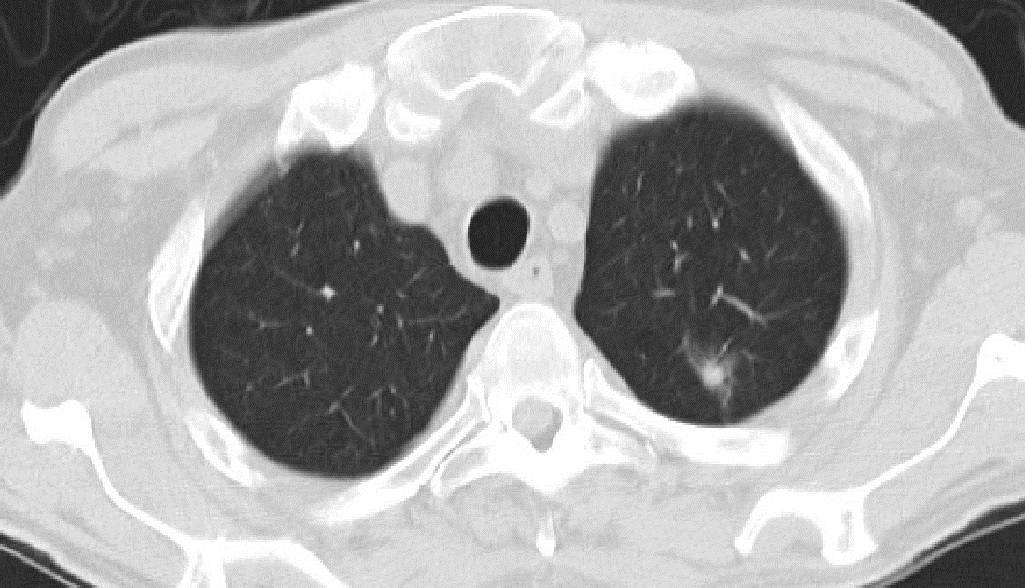A lung nodule is a nodule that appears on an imaging scan of the lung. It is a single, well-defined lesion, ≤ 3 cm in diameter, completely surrounded by air-containing lung tissue.
Lung nodules can be classified as solid and sub-solid nodules based on their density.
A solid nodule on a CT scan appears as a round or round-like white spot in the lung. It is usually dense enough to obscure the bronchi and blood vessels going through it. Sub-solid nodules are so-called ground-glass nodules (GGNs) or ground-glass opacities (GGOs). They are subdivided into pure ground-glass nodules (pGGNs) and mixed ground-glass nodules (mGGNs). The former contains no solid components, while the latter contains some solid components.
A ground glass nodule (GGN) is a ground-glass-like spot on a CT scan of the chest. It’s slightly less dense than a solid nodule and resembles a faint cloud with blood vessels and bronchi inside. Some GGNs may disappear after a period of time. These are usually inflammatory or other benign lesions. However, some GGNs can also be long-lasting and may be more serious diseases requiring regular follow-up. Of course, some of them can be precancerous lesions, in-situ lung cancer, or early lung cancer.
Various conditions can cause GGNs. These may include interstitial fibrosis, pulmonary fungal disease, atypical adenomatous hyperplasia, adenocarcinoma in situ (AIS), primary lung cancer (including microinvasive adenocarcinoma (MIA), invasive adenocarcinoma (IA)) and metastatic lung cancer.
How does a pulmonologist determine if a GGN is benign or malignant? They need to consider some features of the nodule.
- Size
The size of the nodule, especially the size of the solid component, is a major factor in the diagnosis of a GGN. In general, small nodules tend to be benign, while larger ones are more likely malignant. GGNs over 8mm should be followed up to monitor the changes in their size and density. In contrast, GGNs under 5mm have a very low probability of malignancy.
- Margin
The marginal features are another important factor in identifying benign or malignant nodules. Malignant GGNs are usually related to irregular or lobulated contours and spiculated borders. Lobulation is more often associated with malignancy and requires attention. However, some benign nodules also have features such as lobulation, burr, etc.
- Density
As mentioned earlier, lung nodules are divided into solid nodules and ground glass nodules(GGNs) according to their density. GGNs include pGGNs (pure ground-glass nodules) and mGGNs (mixed ground-glass nodules). Solid nodules have a very low probability of malignancy. pGGNs have a higher rate of malignancy, while mGGNs have a much higher probability of being malignant.
- Growth rate
A typical characteristic of malignant tumors is that they grow rapidly. Thus the higher the growth rate of a GGN, the greater the risk of malignancy.
In short, it’s important not to be anxious when a ground glass lung nodule is detected. This is because a GGN, especially a small one, has a low probability of being malignant.
In some cases, a GGN may develop into a lesion. Regular review and follow-up under the guidance of a specialist are recommended, as well as any necessary treatment.
